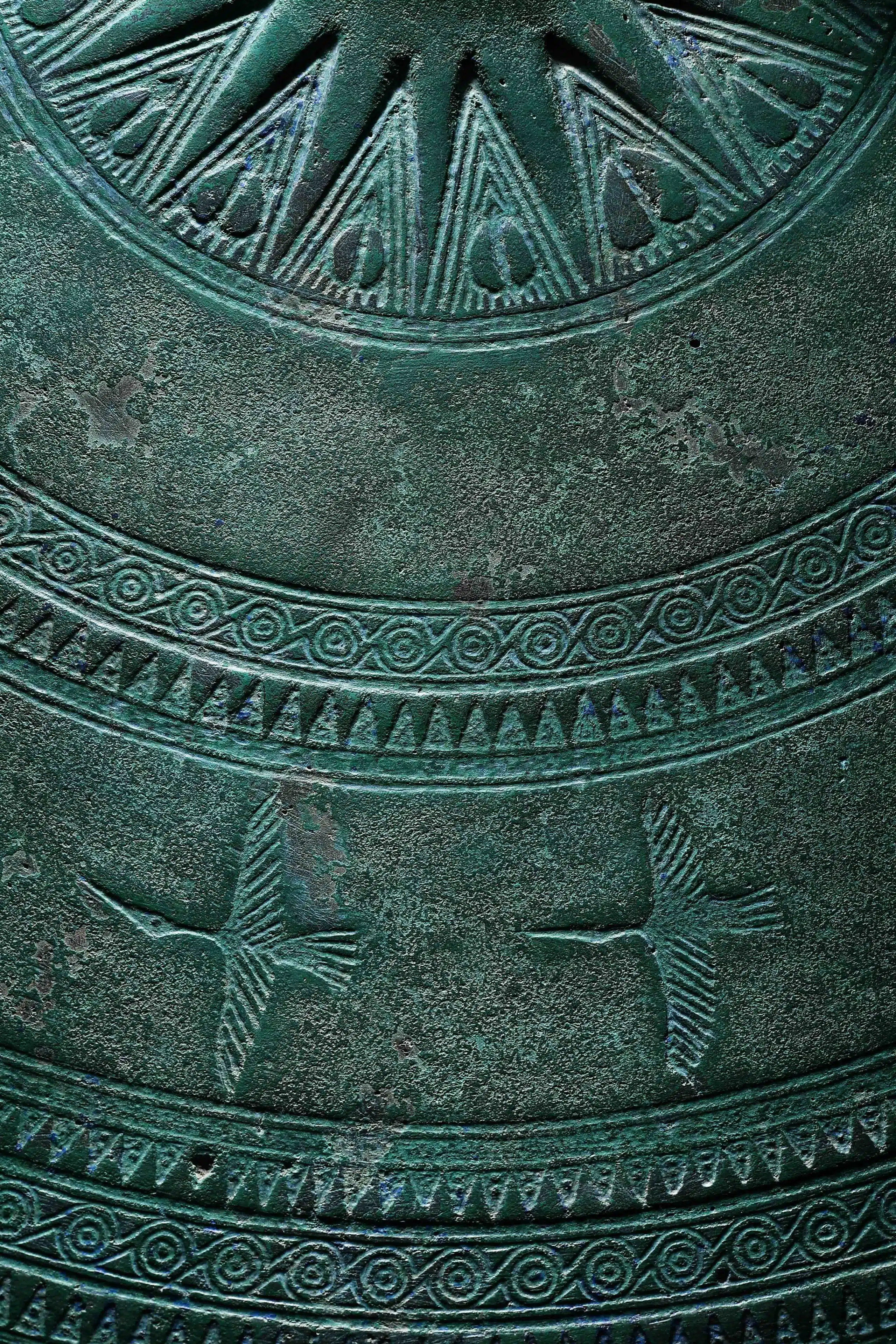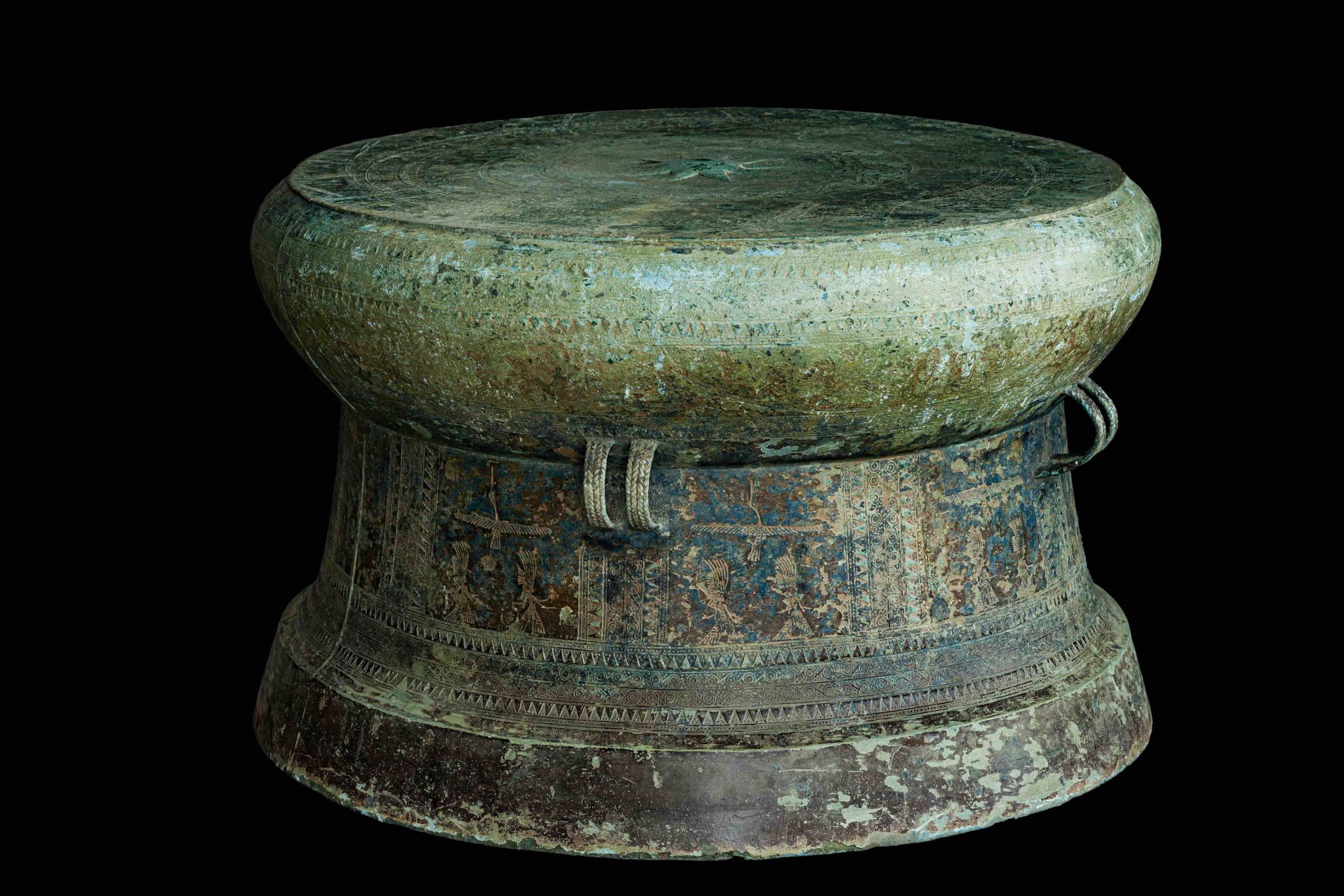Prof. Dr. Trinh Sinh
Photos Ba Ngoc, Vietnam Airlines
The scholar Dao Duy Anh referred to depictions of birds flying on the surface of Dong Son bronze drums as “Lac birds”. The Lac Viet people, the creators of the Dong Son culture, “often adorned themselves with Lac bird feathers on their heads and bodies to transform into their Lac Vat To (Totem) Bird… in order to pray for safety at sea. The flying and perching birds carved on bronze drums are indeed the Totem Bird”. The French scholar V. Goloubew also shared this view, stating that depictions of humans and boats decorated with bird feathers on Dong Son drums symbolize the Totem, with the purpose of making the people and boats resemble the Vat To (Totem), which was a bird species called “Hau Dieu”.

Notably, these two prominent scholars agreed that flocks of birds shown flying on Dong Son bronze drums represent the Totem of the ancient Vietnamese people who created these drums. This means that over 2,000 years ago, ancient Vietnamese people worshipped a bird as their Totem, a practice known as Totemism, in which many ancient tribes revered a sacred animal as the ancestor of their community. For example, some tribes considered the sacred Naga snake as their ancestor, while others revered the divine Garuda bird as their Totem. Many tribes in India worshipped animals such as elephants, monkeys, snakes, and especially cows.
Over the decades, hundreds of Dong Son bronze drums have been discovered, reinforcing Dao Duy Anh’s theory. Many scientists agree that the birds with outstretched wings shown on the drums are Lac birds and the Totem of the Dong Son people. Even on later-era Dong Son drums, the ancients simplified many patterns but retained images of their Totem, sometimes depicting just four flying birds. The bird figures on these bronze drums can be interpreted as divine and the Totem of the ancient Vietnamese.
However, decoding these bird symbols remains a topic of debate. The concept of the Lac bird simply refers to “the bird of the Lac Viet people”. What actual species could this bird be? Even the term “Hau Dieu” does not specify a particular bird species. These linguistic debates, focusing on “defining by names”, are likely to remain unresolved.
An examination of the animal carvings on the bronze drums should gradually help decode some specific species: there are pelicans with broad necks, holding prey; peacocks with short beaks and tufts of feathers on their heads; humped oxen; crocodiles; deer; tigers, etc.
The flying birds depicted on Dong Son drums have the following characteristics: a long, straight, and pointed beak; a tuft of feathers on the back of the head; a long and curved neck; wide-spread wings in flight; and slender legs, sometimes short, but sometimes depicted as longer than the bird’s tail. With these distinctive features[1], the birds can be scientifically classified as belonging to the order Ciconiiformes, which includes 112 species and 5 families. Notably, the family Ardeidae can be further divided into 31 species, such as herons, egrets, bitterns, and white storks, etc. Therefore, it would be correct to refer to the birds on the drums as cranes, herons, or storks.

Cranes, herons, and storks were familiar to the ancient Vietnamese, who were primarily rice farmers. In folk songs, the image of the stork is most prominent: “The stork flies high and low, from the temple door to the fields.” Sometimes, the ancients even metaphorically depicted a hardworking woman as “The stork wading along the riverbank.” Today, from the North to the South, many stork gardens are preserved, where storks soar across the sky, attracting tourists. The crane, on the other hand, is often associated with spirituality, with nearly every temple featuring a crane statue. In many solemn places of worship, a pair of cranes is placed before the altar.
The images of storks, cranes, and herons on Dong Son bronze drums, commonly referred to as “Lac birds”, remain prominent today. Many depictions of Lac bird can be found in artistic works and on the logos of everyday products. This reflects the enduring vitality of the bird that was the Totem of the ancient Vietnamese.
This April, the image of the Lac bird will be featured on the fuselage of Vietnam Airlines’ aircraft, reflecting the airline’s aspiration to spread the nation’s cultural identity far and wide. In ancient times, the Lac bird “flew” on bronze drums across Southeast Asia and southern China. Today, the Lac bird extends its wings even further on the flights of Vietnam Airlines.










